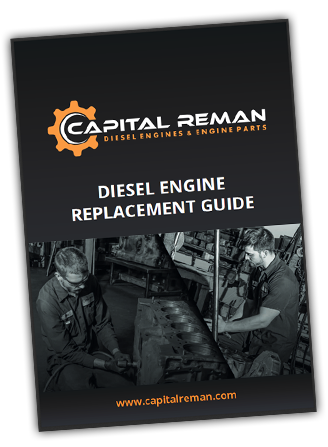The Caterpillar C15 is a symbol of reliability and power. But what makes it so special? If you drive the highways or manage fleets of long-haul trucks you understand the C15's place in the engine hall of fame.
The Birth of a Powerhouse
The Caterpillar C15 engine's history dates back to the early 2000s, though its root are even deeper. The engine was part of Caterpillar's strategy to meet the increasing demands for power and efficiency in heavy-duty trucking. The C15 quickly became a favorite among truckers and fleet managers because of its reliability and durability.
The C15 was designed to replace the older CAT 3406 and bring new technology to the market. It featured improvements over 3406, making it more suitable for a wide range of applications. It was not just an upgrade but a significant leap in engineering.
Over the years, the C15 has maintained a reputation for reliability. Truckers and fleet managers appreciate its ability to perform under tough conditions without compromising on efficiency. And the engine's long lifespan and low maintenance contribute to its lasting popularity.
What Sets the C15 Apart?
One of the standout features is the C15's robust construction. Built with heavy-duty components, the C15 can withstand high-stress environments. This makes it ideal for long-haul trucking where performance and endurance are critical.
The C15 is also versatile. Unlike some engines that are limited in their use, the C15 adapts well to various tasks. It can be found powering different types of vehicles, from trucks to industrial machinery. This adaptability is a key reason it remains a top choice in many industries.
The C15 is equipped with electronic controls. The engine optimizes fuel usage while delivering impressive power output, up to 580 hp. This balance of power and efficiency sets the C15 apart from many of its competitors.
Main Uses of the C15 Engine
In the trucking industry, the C15 is a preferred choice for long-haul routes. Its reliability and power make it suitable for carrying heavy loads over vast distances, ensuring timely deliveries.
Beyond trucking, the C15 finds applications in construction and agricultural equipment. Its ability to handle demanding workloads makes it a valuable asset in these sectors. Whether it's powering a combine harvester or a bulldozer, the C15 delivers consistent performance.
The C15 is also popular in marine applications. Boats and ships come equipped with C15 engines. This versatility showcases the engine's adaptability to different environments and needs.
The C15's Role in Fuel Efficiency
Fuel efficiency is a major concern for truckers and fleet managers. The Caterpillar C15 addresses this issue with its advanced fuel management system. By optimizing fuel injection and combustion, the engine reduces fuel consumption without sacrificing power.
This means lower costs for businesses. With rising fuel prices, having an engine that maximizes every drop of fuel is invaluable.
In addition to saving money, the C15's efficient fuel use contributes to lower emissions. By reducing the carbon footprint of fleets, the C15 helps businesses meet regulatory requirements and promote sustainability.
Maintenance and Longevity
One of the main advantages of the Caterpillar C15 is its low maintenance needs. The engine is designed for durability, requiring fewer repairs and replacements over its lifespan. This reduces downtime and maintenance costs, which is beneficial for fleet managers aiming to maximize productivity. Regular maintenance intervals for the C15 are user-friendly, allowing for easy servicing.
The robust design of the C15 also plays a role in its long lifespan. Many engines see more than a million miles.
Fleet Managers and the C15 Advantage
The C15's versatility also means that it can be used across different types of vehicles in a fleet. This consistency simplifies fleet management, as operators and technicians become familiar with a single engine model. It streamlines operations and reduces the difficult job of fleet maintenance.
The Future of the C15
The Caterpillar C15 remains a relevant choice for modern needs. With ongoing advancements in technology, the engine continues to evolve. Innovations are likely to enhance its efficiency and capabilities further, keeping it competitive in a rapidly changing market.
The C15's established reputation ensures that it will remain a staple in industries that rely on heavy-duty engines. Its proven track record gives it a strong foundation to adapt to future demands and innovations. Businesses can expect the C15 to continue delivering exceptional performance for years to come.
Newer engines may enter the market, but the C15's blend of reliability, efficiency, and versatility will keep it in demand. The engine has stood the test of time and will likely do so in the future, adapting to meet the needs of tomorrow's industries.





